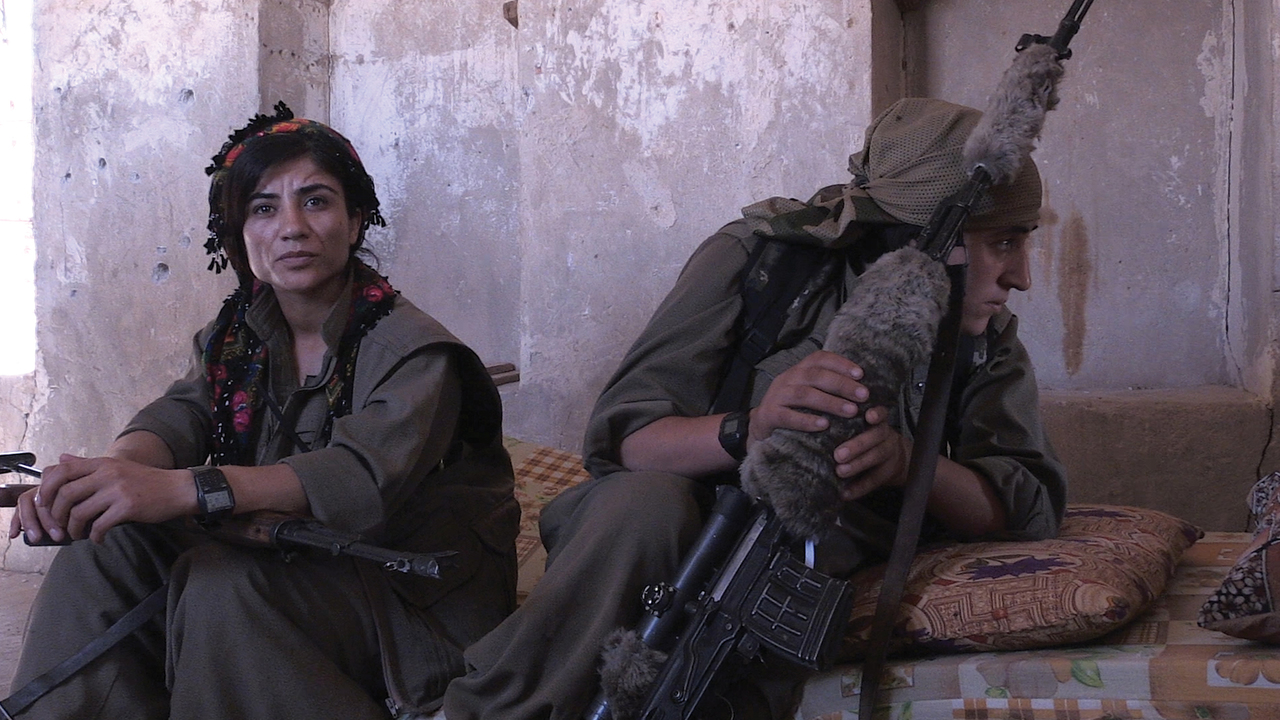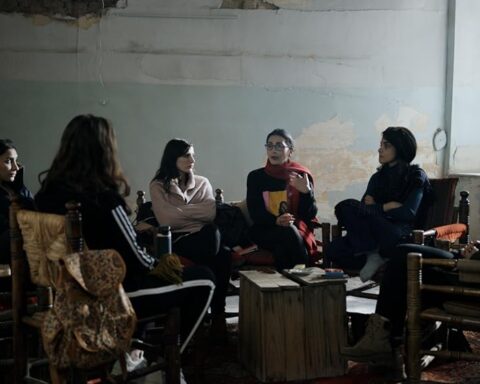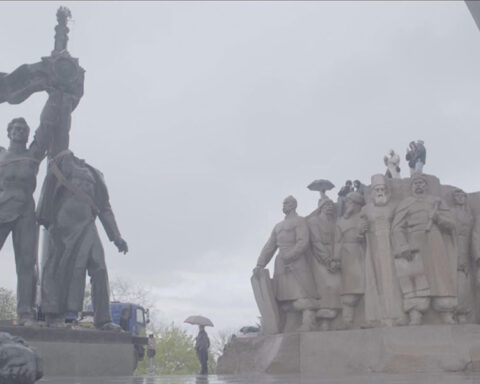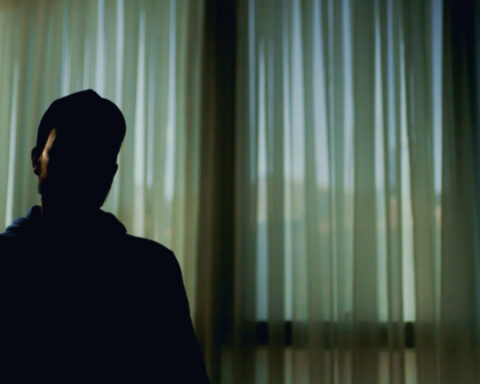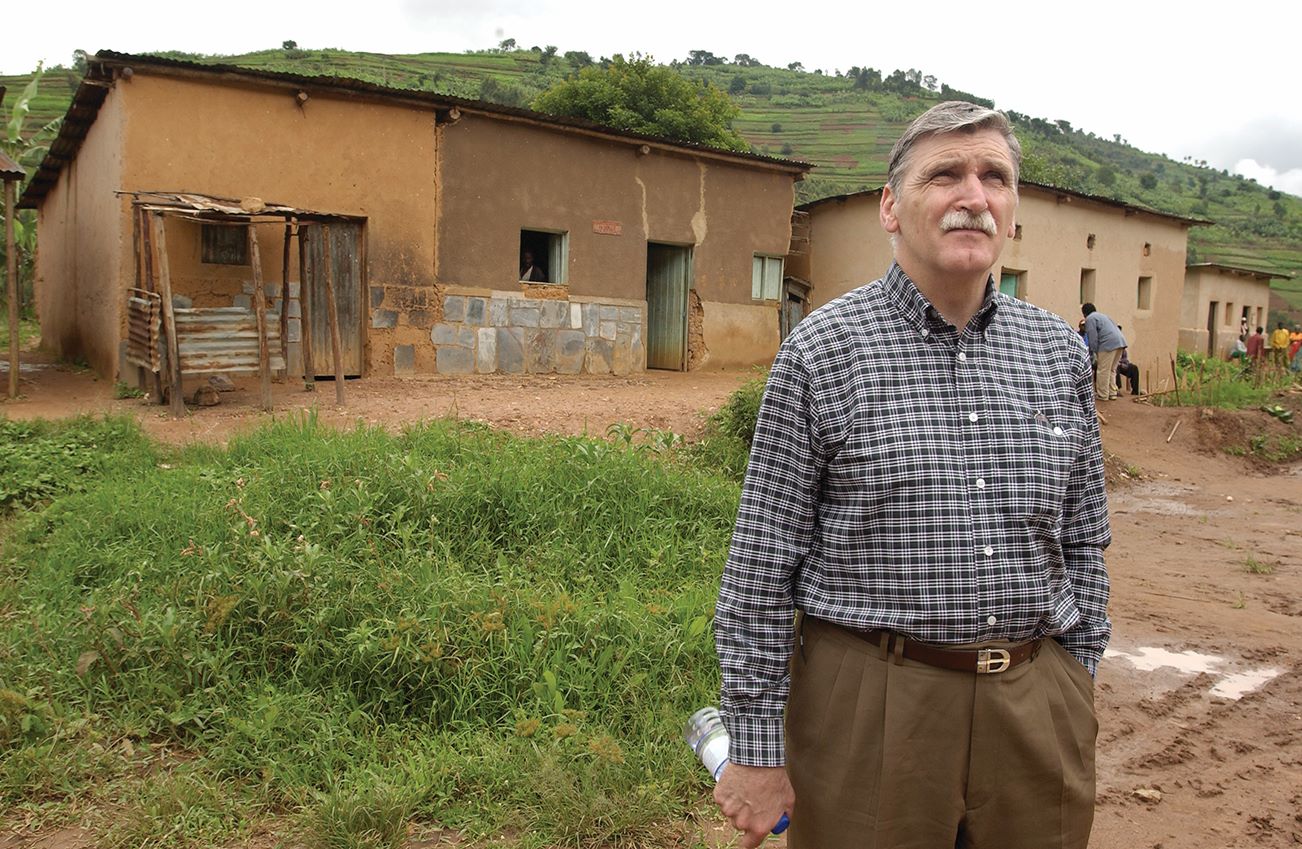You might be surprised to find out that the story of the Syrian Civil War to date is hotly contested ground. Not the war: the story.
Here’s the conventional take. In early 2011, when the Arab Spring had yet to take hold in Syria, some teenage boys in the southern town of Daraa scrawled anti-Assad graffiti on a wall. The regime responded by arresting and torturing them. The people protested, demanding the removal of the local governor. The Assad regime, seeing what was happening to their counterparts in Tunisia, Libya and Egypt, decided not to risk leniency and responded with a heavy hand, violently crushing the protests. The funerals of dead protesters then turned into bigger protests. Soon, masses across the country were calling for the ouster of Assad, which he met with bombings and notorious chemical attacks like the one in April 2013 in Ghouta, which killed 1400 civilians.
Seeing these abuses, Syrian soldiers began defecting in order to defend the protesters from Assad, starting local militias under the umbrella of the Free Syrian Army. Assad characterized the resistance as foreign-funded jihadism. The West, based on those warnings and its experiences in the quagmires of Iraq and Afghanistan, refused to fund or militarily aid rebel groups. The Free Syrian Army splintered and, into the void it left, came ISIS.
Originally a branch of al-Qaeda, ISIS gained the loyalty of three groups: Iraqi ex-Ba’athists alienated and angered by the new regime, extremists formerly imprisoned by Assad and released after the outbreak of revolution to undermine the rebels’ image, and foreign fighters—largely aimless youth wooed by ISIS’ action movie-style propaganda videos—from Africa, Central Asia, Europe and North America.
ISIS quickly took over large swathes of northern Syria, establishing a capital in Raqqa. When they were driven out of parts of the region, they stormed over the border into Iraq, where they took over Mosul and massacred its Yazidi religious minority. The Kurds came to the rescue, driving ISIS out of Iraq’s north while the Iraqi army fought back from its outposts near Baghdad. Back to Syria went ISIS—and there it remains, in a sinister semblance of a truce with Assad and his Russian backers as they focus on driving out the other remaining rebel forces and establish regime control again.
Meanwhile, Syrian refugees have been pouring over the borders into Jordan, Lebanon and Turkey, and from Turkey across the Mediterranean to Greece and into Europe. This has set off a wave of xenophobic nationalist hysteria that paints refugees as criminals and terrorists, fuelling the rise of far-right politicians like Marine Le Pen and Nigel Farage.
That’s the mainstream version of events.
Against it is a massive alternative-news ecosystem of investigative journalists, bloggers, academics and conspiracy theorists, which casts doubt on every assertion I just made. For them, the story goes something more like this: the 2011 protests, as initially reported by mainstream media like Time Magazine and the New York Times, were small, and social media attempts to incite a “Day of Rage” fizzled. This indicates, to them, that Syrians en masse did not desire the ouster of Assad. The rebellion that emerged is thus characterized not as the popular expression of a desire for freedom but as the work of violent jihadists only—ISIS, al-Nusra, and so on. It was the latter, according to these people, who were in fact responsible for the 2013 Ghouta chemical attack, and the 2017 Khan Shaykhun one as well—false flags, both, meant to draw the West into the war.
This isn’t a fringe account of events. It surfaces in respectable outlets across the political spectrum — The Intercept, Alternet, Jacobin, The American Conservative and, in one very high-profile and controversial instance, the London Review of Books (LRB), to name just a few — and has deep roots in the bowels of the internet: places like Naked Capitalism, The Centre for Research on Globalization, and the dread RT, among others. If some among the latter group, which can look like mid-’00s blogs or tabloids and indulge in a fair bit of yellow journalistic style, presumptuous jargon and the references and responses endemic to an insular blogosphere, can seem easy enough to dismiss, others give pause. Academics from respected institutions, American ex-intelligence agents, newspaper columnists and celebrated journalists like Seymour Hersh, Patrick Cockburn and Robert Parry are among its numbers. At its root is the dearth of verifiable information coming out of Syria. Western journalists who brave it are embedded in regime-held areas, while citizen journalism by Syrians tends to be poor in terms of quality and, at a time when even video evidence is easily faked, easy to dismiss.
It was Hersh whose 2013 LRB story article, Whose sarin? set the alt-news ecosystem alight. There, he claimed that the Ghouta attacks were not carried out by the Assad regime, but by the Syrian opposition—probably the al-Nusra Front. His article cited anonymous sources in American intelligence, where Hersh’s have long been considered second to none. That anonymity did not raise red flags among alt-news people, but it did mean that no mainstream news outlets in the U.S. would agree to publish his account. Bolstering it, though, was Jeffrey Goldberg’s 2016 Atlantic article The Obama Doctrine. Buried in Goldberg’s discussion of Obama’s reasons for his infamous flip-flop on his “red line” regarding chemical attacks in Syria is that, at the decisive moment, Obama was told by his director of national intelligence, James Clapper, that there was a lack of concrete proof that the regime of Bashar Al-Assad was responsible for the Ghouta attack. It wasn’t a “slam dunk.” Evidently, there was enough doubt in the ex-president’s mind to renege on his red line.
For these commentators, whose perspectives are formed more than anything by the memory of the Iraq War and the media’s complicity in the lies around the weapons of mass destruction casus belli, whatever looks like American intervention is called out as crypto-“regime change.” Deriving from that, anything that officials and the mainstream media blame on the Assad regime is subjected to extreme scrutiny and skepticism and ultimately blamed on jihadists like ISIS or al-Nusra. This makes them, at a certain level, Assad apologists: much is made of Syria’s pre-Arab Spring stability and civility; report upon report of torture, political repression and other human rights abuses are summarily dismissed. Concomitantly, the rebels are framed unequivocally as foreign-funded Sunni jihadist terrorists. The reasoning: if they are understood to be secular, democratic liberals—as the mainstream narrative goes—then that leaves room to argue that the West should be on their side. Intervention is a non-starter; everything else follows from that premise.
Here’s an example of the uncomfortable places the logic will take them. A particular object of alt-news ire is the group of volunteer first responders the White Helmets. The subjects of two documentaries—the saccharine, propagandistic Oscar-winning short The White Helmets and the somewhat-better-though-still-flawed Last Men in Aleppo — the White Helmets have drawn nothing but praise in the mainstream West, with the British newspapers The Guardian and The Telegraph running editorials endorsing the group for the Nobel Peace Prize. In places like Alternet, The Centre for Research on Globalization, 21st Century Wire, Moon of Alabama and Activist Post, by contrast, a different conventional logic prevails. There, it is common to see the White Helmets referred to as a terrorist group, linked variously with ISIS, al-Qaeda or al-Nusra, possibly even being the propaganda organ of one of those groups. As recently as May 2017, Ben Norton and Max Blumenthal could write an article on Alternet entitled, “Yet Another Video Shows U.S.-Funded White Helmets Assisting Public Executions in Rebel-Held Syria: The shocking regime change scandal mainstream media refuses to touch.”
Why? The White Helmets see Assad as the enemy; their funding is opaque, possibly linked to less-thansavoury characters; they are responsible for all the footage of their heroic rescues; and, yes, there is troubling evidence like that video that is hard to integrate into the mainstream narrative. Above all, though, sympathy with them might lead liberals to support calls for humanitarian intervention. So the White Helmets have to be the enemy.
This year, Toronto’s Hot Docs film festival ran an unofficial program of films about the Syrian Civil War and the ensuing refugee crisis, entitled Syria 360º. Under this umbrella came films that ranged from on-the-ground war reportage to heartwarming refugee success stories, from the personal and poetic to the narrative epic. The best of them are City of Ghosts, a portrait of the citizen journalist group Raqqa Is Being Slaughtered Silently (RBSS) directed by Matthew Heineman of Cartel Land fame (and executive-produced by Alex Gibney, whose smooth narrative style City of Ghosts successfully emulates), and Sebastian Junger and Nick Quested’s Hell on Earth: The Fall of Syria and the Rise of ISIS. The latter is the most exhaustive telling of the story of the war to date, and its analysis is solid; it’s the film you should see if you just want to know what’s going on. Yet it’s City of Ghosts that I’m tempted to call the best documentary about the Syrian Civil War so far. Why? It is the only documentary on the topic that reflects the fraught ideological and epistemological climate of the war, weaving the problem of information into the fabric of the story via its focus on journalism.
In one sense, City of Ghosts is what The White Helmets should have been: an involved on-the-ground portrait of a group of brave individuals that also contextualizes them within the larger conflict. The film shows the founders of RBSS to be among the citizens newly politicized by the events of 2011, who took action by filming the protests in their sleepy northern town of Raqqa and, subsequently, the regime’s brutal responses. When ISIS took over Raqqa in 2013 and made it their de facto capital, subduing the population through their trademark spectacular violence, RBSS was forced underground, but continued its coverage. When the Assad regime reacted to ISIS’ takeover with airstrikes—in the words of an RBSS activist, using the presence of hundreds of ISIS terrorists to bomb thousands of civilians—many RBSS activists escaped to Turkey and Europe, relaying video and news from their comrades still in Raqqa to their website, social media and YouTube.
In many ways, City of Ghosts is admirably transparent. Its gloss of Syrians’ mindset under the Assad regime and the political awakening of 2011 helps to ground the story of RBSS’ founding, and its explication of the process by which news is made is thorough and exemplary. In other ways, more could have been done. The issue of funding—alt-news’ idée fixe: “follow the money”—is less explored. In interviews, RBSS members state that, coming from middle-class families, they started out by funding themselves and are now supported by a few NGOs. This is where alt-news denizens would likely poke holes in RBSS’ story. Which NGOs? With what agendas? Why? There is also one notable elision: the group’s fraught relationship with the Kurds in northern Syria.
To those familiar with the mainstream narrative, it won’t be a surprise that, in spite of the immediate threat coming from ISIS, RBSS spokesman Abdul Aziz Al-Hamza insisted at the Hot Docs screening of City of Ghosts that the real enemy is still the Assad regime. It was Assad who they were originally revolting against, and those feelings haven’t gone away, even as ISIS has murdered RBSS members and impaled their heads on fence-posts in Raqqa’s central square. RBSS members even voice sympathy with those who join ISIS as a misguided resistance against Assad.
That somewhat counterintuitive position jells with the ones held by books like Burning Country by Robin Yassin-Kassab and Leila Al-Shami and Syria Speaks, an overview of art and journalism in the conflict. Those books, which have the distinction of being actually from Syria, emphasize the grassroots organizing, rising political consciousness and basic desire for dignity at the heart of the Syrian uprising. Hell on Earth, in which Yassin-Kassab acts as a talking head, largely shares this perspective.
But is it the whole truth? Veteran journalist Charles Glass—whose expertise in the Middle East extends back to the 1970s; he made headlines in 1987 when he was held hostage by Shi’a militants in Lebanon—weights things quite differently in his book Syria Burning. Glass emphasizes Assad’s support among the minority groups—Christians, Druze, his own community of Alawites—that his regime had long defended (or, at least, positioned themselves as defenders of) and the stability of regime-held areas. On his account, which quotes some of the same people interviewed by Yassin-Kassab and Al-Shami, people just want the war to end. Glass seems tacitly to prefer the repressive normalcy of Assad to the insane violence of ISIS. Not the most principled position, maybe, but one that also makes perfect sense after six long years of war—and counting.
What is documentary cinema supposed to do? It may not be the most fashionable question, but in the context of the incredible complexity of contemporary issues and the urgency with which they must be understood and morally confronted, it is eminently worth asking.
Take the refugee films, which consciously respond to an atmosphere of xenophobia, by prioritizing intimacy and humaneness in telling their stories. Many of them are resolutely minor, focusing on individuals and families, and stylized in ways that obviate complexity. The hero of In Procedure is presented simply as a loving father; his past in the anti-Assad père protests of 1982, which ended in brutal massacres by the regime, is mentioned only as a means to illustrate the regime’s brutality, with the former revolutionary’s beliefs carefully elided. In 69 Minutes of 86 Days, we see the voyage of a refugee family through the eyes of a playful little girl in dreamy long takes. It’s pleasant enough and the ultimate reunion with relatives in Sweden is emotional. But the film ultimately flattens the refugee experience into a sentimental narrative unburdened by complicating nuance.
Much the same can be said about Last Men in Aleppo. It is more extensive and less contrived than The White Helmets but just as scanty on many of the details one might expect in a film on such a topic: funding, connections with other organizations, attitudes towards the various sides in the conflict. The film mentions only Assad and Putin as enemies; ISIS is reduced to a single, neutral mention. Meanwhile, the film follows a group of White Helmets as they rescue people from the wreckage of a car bomb: not exactly the weapon of choice of the Assad regime. The film does not consider the attack’s culprit.
By contrast, A Memory in Khaki weaves five monologues into a fugue on themes of Syrian history and identity, with khaki standing in both for the colour of military and student uniforms and the bland yet tense calm of life under the dictatorship. Yet the absence of any kind of religiosity, ubiquitous in the verité footage in every other film about Syria, should clue us in to the fact that the film’s five voices are all in fact variations on the single voice of Damascus’ educated liberal class. It’s a lovely, intimate film, but limited in scope, eliciting more subdued contemplation than urgent analysis.
Even Hell on Earth, the best narrative of the conflict to date, is not infallible—scratch the surface and you will find plenty to question. For one, Yassin-Kassab, on whose testimony much of the film relies, is a polarizing figure among the denizens of alternative news, who caricature him as an inflammatory, out-of-touch, PC figure. Second: though the film identifies Obama’s red line as a turning point, it comes up short in its analysis of the flip-flop. Most importantly, it does not engage with the evidence gathered or positions espoused by alt-news. It affects an authoritative stance that, in the desperately uncertain circumstances of the Syrian Civil War, is not entirely convincing.
I’m no expert, I’m not here to serve as arbiter on the truth of the Syrian conflict—though, for my money, Hell on Earth and City of Ghosts have it mostly right, as far as it goes. Rather, I want to reflect on the ideological and epistemological landscape in which these films exist.
Angela Nagle points out in her new book Kill All Normies: Online culture wars from 4chan and Tumblr to Trump and the alt-right that while it was the left that began the practice of anti-establishment subversion and transgression, those strategies have in recent years been co-opted with remarkable ease by the alt-right in places like 4chan and Breitbart. Her conclusion: there was never any necessary connection between those strategies and the socialist program most of the 20th century’s troublemakers espoused.
I think we’re seeing something similar play out now in the media, and nowhere more so than in coverage of Syria. The left, reared on the likes of I.F. Stone, Noam Chomsky and Michel Foucault, is reflexively distrustful of the political, economic and media establishment. When everybody told us there were weapons of mass destruction in Iraq, we didn’t believe them, and took pride in our media savvy. But what happens when everybody now says, in effect, that Assad’s Syria has weapons of mass destruction, and is using them on its own people? Do we believe them? Or do we believe the people who disagree, and posit alternative theories? We’re in a tough spot.
Analogous to the alt-right’s harnessing of transgression to reactionary ends is alt-news’ subversion of the media’s version of reality, the results of which seem divorced from any recognizable leftwing aims. We’re left with no idea what to believe. On the one hand, there’s the discredited yet nominally liberal media; on the other, people—tons of them—harnessing reasonable doubt about the media’s motives to work that amounts to pro-dictatorship propaganda, clickbait gotchas and isolationist sophistry. The media has lost its hegemony, and nothing else has credibly claimed it. As far as truth goes, we’re in the wilderness.
Documentary has largely recused itself from this competition of legitimacy. Documentaries now prize story arc, sentiment and sanctimony over thorough investigation and argument; it’s not expected that they play any important role in the information ecosystem. Their purpose seems to be to preach to the choir: tepid left sentiments for tepid left audiences.
And that’s a shame. Documentary, standing between journalism and art, offers the unique opportunity to engage with all aspects of a phenomenon, from observed realities to abstract ideas. And there are some working today that take up the challenge: Joshua Oppenheimer, Frederick Wiseman, Sergei Loznitsa, Roberto Minervini, Kirsten Johnson, Theo Anthony, Abbas Fahdel and Brett Story are just a few that come to mind. But it’s rare to see work like that, work that faces up to the dark, violent complexity of the contemporary world in a way that reveals something about it instead of returning at the decisive moment to platitudes.
Rare as well is the documentary that grapples with the central problems of its form, which, as it happens, is also the central problem of our era of “fake news,” the alt-right, and so on: the means by which evidence is gathered, truths communicated, moral positions staked out and defended. Maybe that’s a tall order, but it shouldn’t be. Documentary could be the defining medium of our time; when I see films like The Act of Killing, Maidan, Louisiana (The Other Side), Rat Film, and The Prison in Twelve Landscapes, I think it is. But those shouldn’t be the exceptions, the eccentricities, the festival favourites. They should define the form; they should be the standards to which documentary is held, to which documentarians on any subject aspire.
That sensibility might have produced a genuine masterpiece on the Syrian Civil War; as it stands, you might be better off reading the news—which, as my deadline approaches, tells me that in recent months, neither Assad nor ISIS nor Russia has been the biggest killer of civilians in Syria. That, I gather from Laura Gottesdiener on the excellent site TomDispatch, would be the good ol’ U.S. of A.




